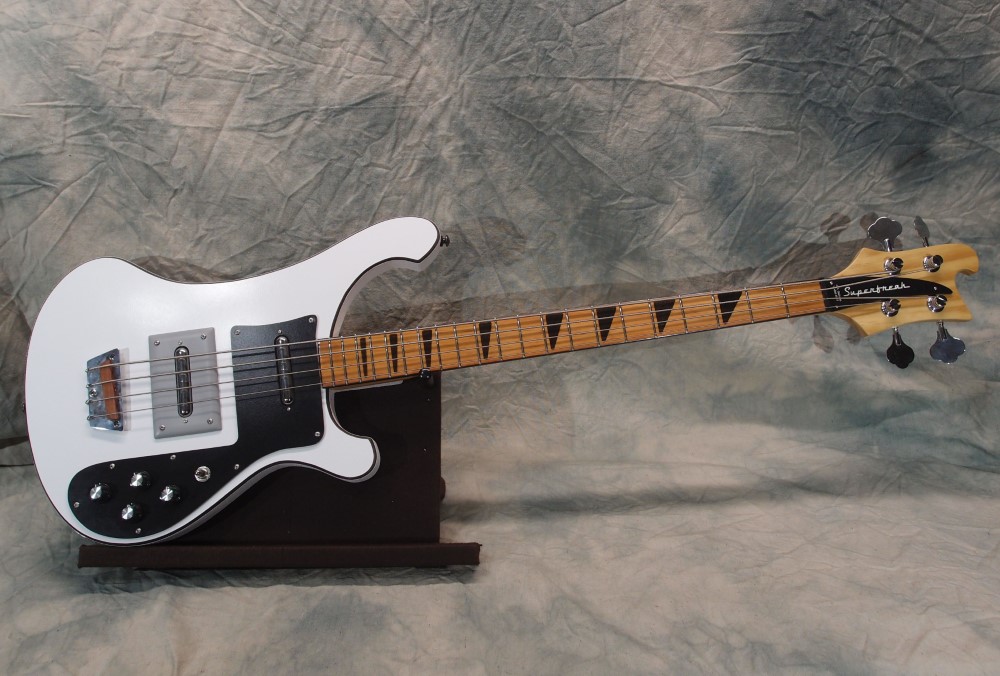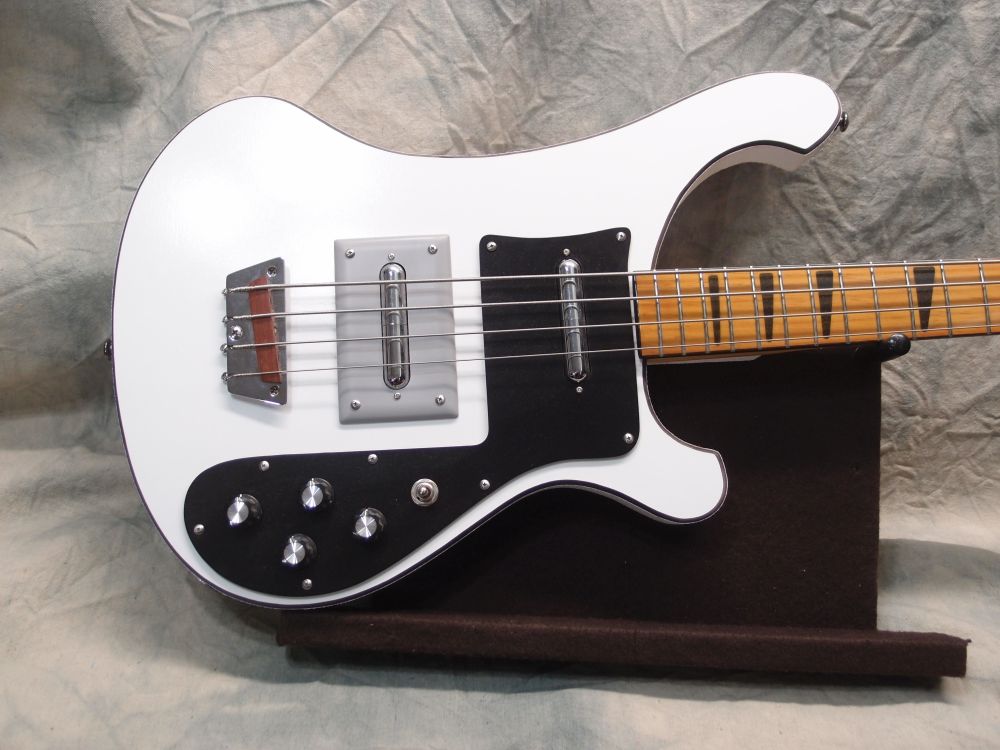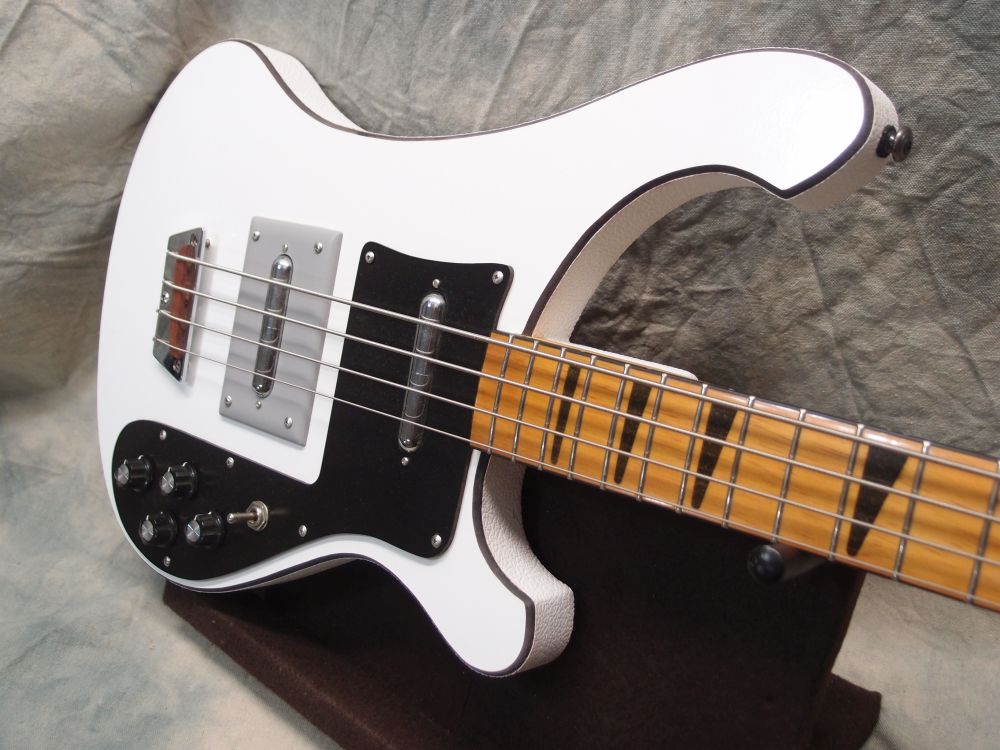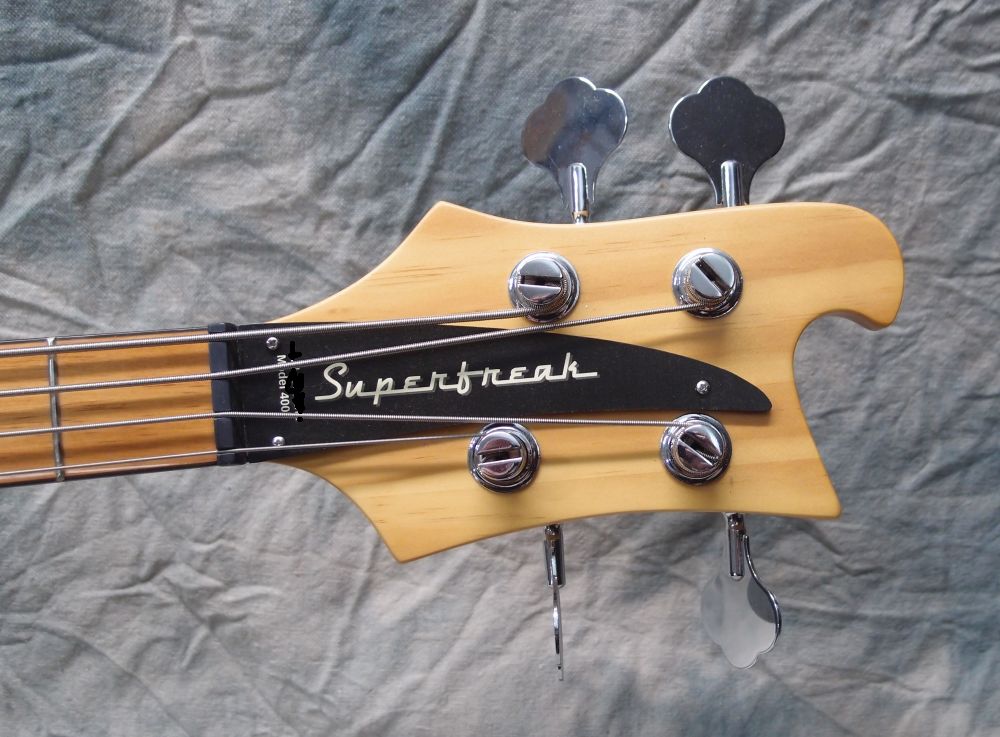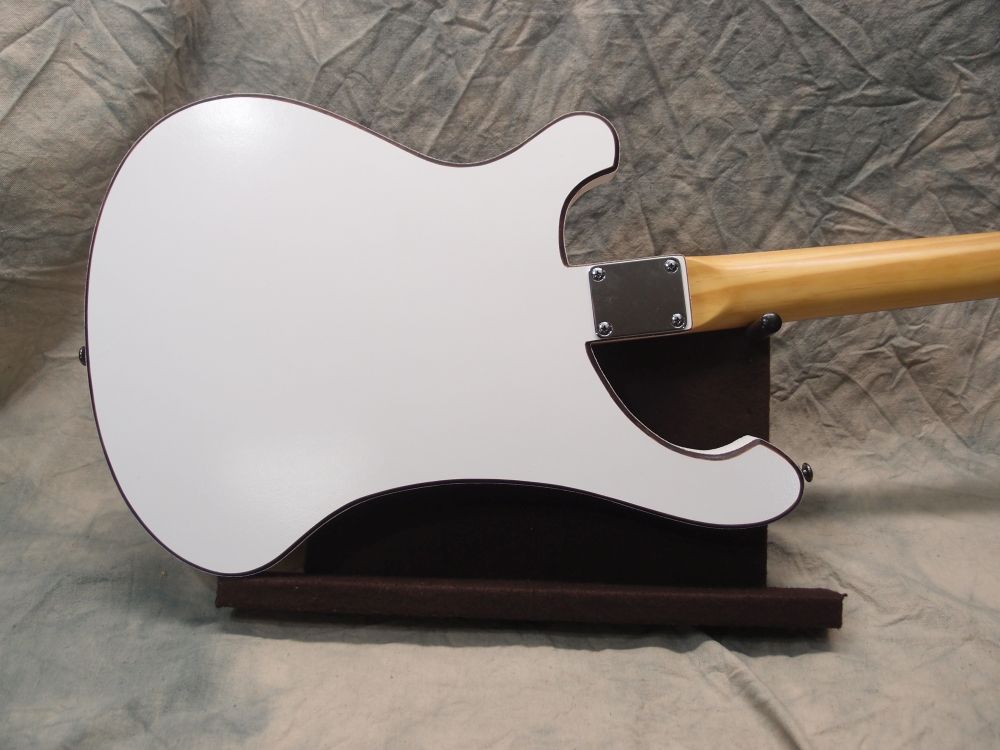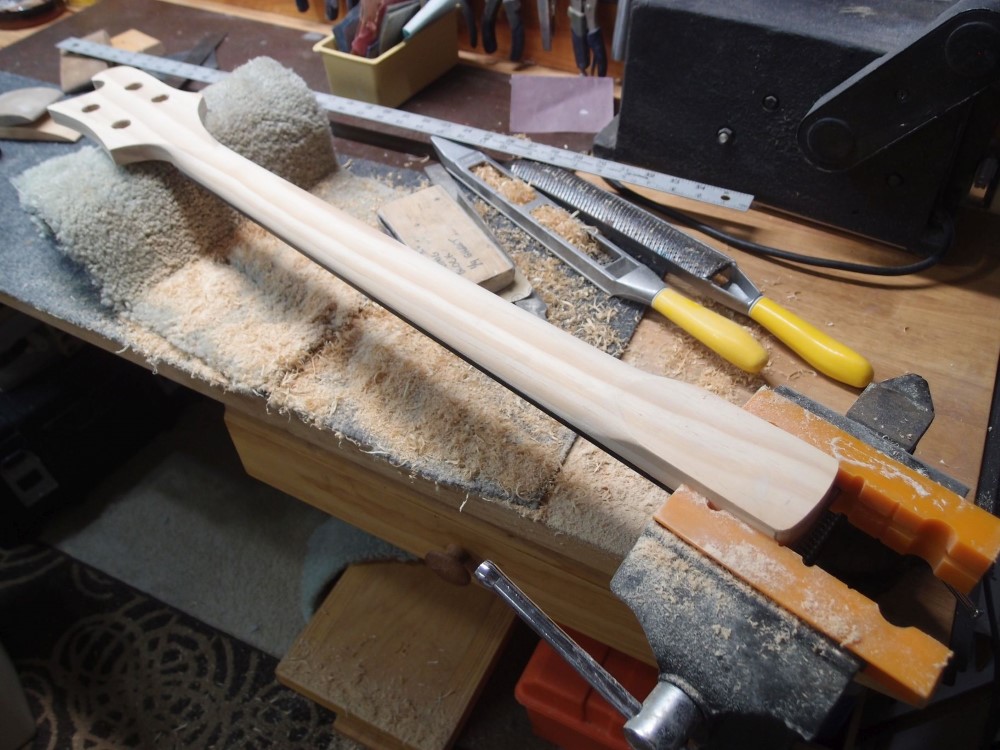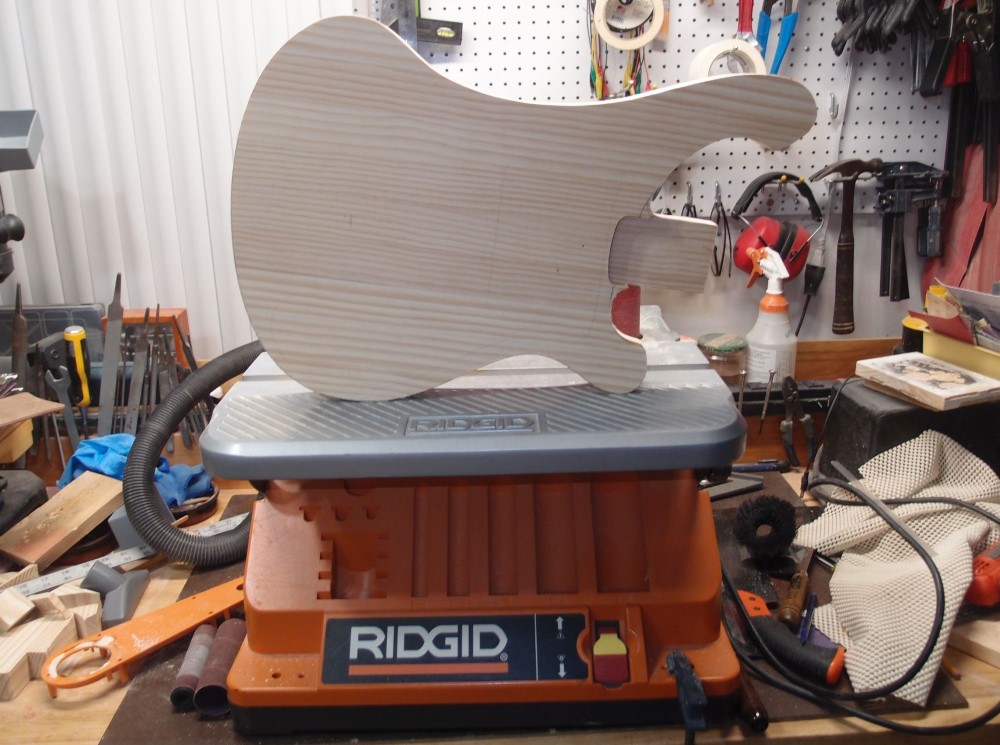September 4, 2020
Going Nutty
September 4, 2020

This is the latest Ric project. I tried to use a Gibson-style nut, but it just can't cope with the Rickenbacker geometry. If you make the string slots deep enough to keep the strings from jumping out sideways, you end up over-cutting them, even with the 1.5mm shim I already installed because I was expecting that.
So I knocked the nut off with a sharp tap from the fretting hammer to fix the problem. This is why you want to install a nut with some sort of glue that you can break without damaging the guitar. E6000 works well, or even Elmer's glue, and both are easy to clean away if you have to reset the nut. The worst choice would be epoxy or CA.
I thought about it a bit, and decided to glue a shim to the bottom of the nut. I made the shim out of a bit of black binding, roughed-up the surfaces, and glued it on with black CA, which I also used as filler around the edges. Some sanding and polishing, and the joint is almost invisible. To polish the tiny plastic part, I just rubbed it on the carpet on the benchtop.
Then I drilled some pits in all the mating surfaces, as you can see in the picture. That will give some mechanical lock to the joint. Finally, I glued it back in with E6000 again, and fought off my urge to wipe away the squeeze-out, as it is better to let it dry and roll it off with your finger. I'll finish this in the morning, now I will have to re-cut all the nut slots.
The real question is, how will this affect the tone? Discuss amongst yourselves.




